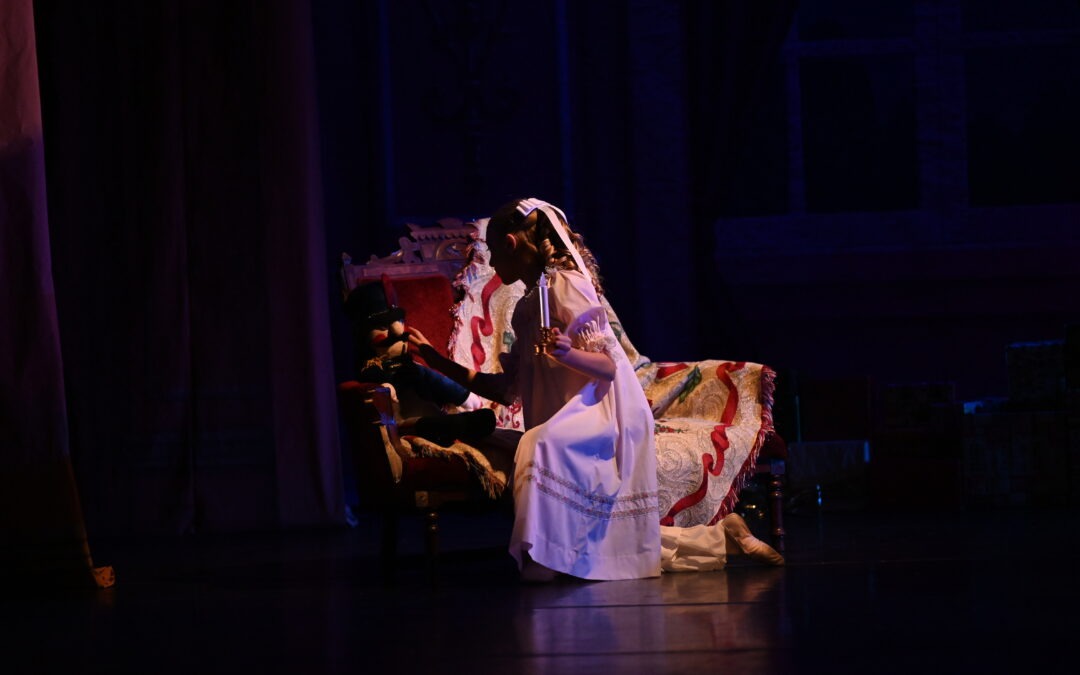The crisp air carries the scent of pine and gingerbread, and twinkling lights adorn every corner. It’s Nutcracker season, and stages across the globe have come alive with the whimsical tale of Clara and her enchanted Nutcracker Prince. But how did this captivating ballet become synonymous with the holidays? Let’s delve into the rich history of Nutcracker. We will explore its fascinating journey from a literary creation to a beloved holiday tradition and then take a peek into the Virginia Ballet Company’s interpretation of this treasured classic, first staged more than 60 years ago.
The History of the Nutcracker Ballet: From Dark Tale to Enchanting Score
The story of Nutcracker was born in 1816, with the publication of E.T.A Hoffmann’s dark fantasy novella, “The Nutcracker and the Mouse King.” The heroine of the original story was named Marie, not Clara as she has come to be known in many performances. She receives a toy nutcracker from her godfather Drosselmeyer, but there is more to the story than made it into the eventual ballet. Hoffman’s tale incorporates a revenge scheme in which the Queen of Mice angers a king who then traps and kills her children. The Queen of Mice, in turn, casts a spell on the king’s daughter to enlarge her head and cause her mouth to drop open in a perpetual wide grin. There’s more, but suffice it to say that the full tale was not readily suited for a ballet.
Enter Alexandre Dumas père, a French author who, in 1844, adapted Hoffmann’s story. It was this adaptation that eventually fell into the hands of Marius Petipa, the renowned French-born choreographer, and Pyotr Ilyich Tchaikovsky, the celebrated Russian composer.
Commissioned by the Imperial Theatres of Russia in 1891, Petipa and Tchaikovsky set about creating a captivating ballet. The Nutcracker premiered in December 1892 at the Mariinsky Theatre in St. Petersburg. Tchaikovsky’s score, with its rich melodies and vibrant orchestral palette, became an instant masterpiece that received critical acclaim. And here is a surprising fact about the history of the Nutcracker ballet: The initial production received a lukewarm reception. Audiences found the story’s second act confusing and the large cast of children unappealing.
The Nutcracker Finds Its Footing in the West
The Nutcracker remained largely confined to Russia until the mid-20th century. However, following the Russian Revolution of 1917, many skilled Russian dancers and choreographers emigrated westward. Among them was George Balanchine, who would play a pivotal role in popularizing The Nutcracker in the United States.
Balanchine, a visionary choreographer, staged his own unique version of The Nutcracker for the New York City Ballet (NYCB) in 1954. Unlike the original, this production featured streamlined choreography and professional dancers. It found widespread success and helped solidify The Nutcracker’s place as a cherished holiday tradition in America. But Balanchine’s wasn’t the only Nutcracker in the U.S. at the time.
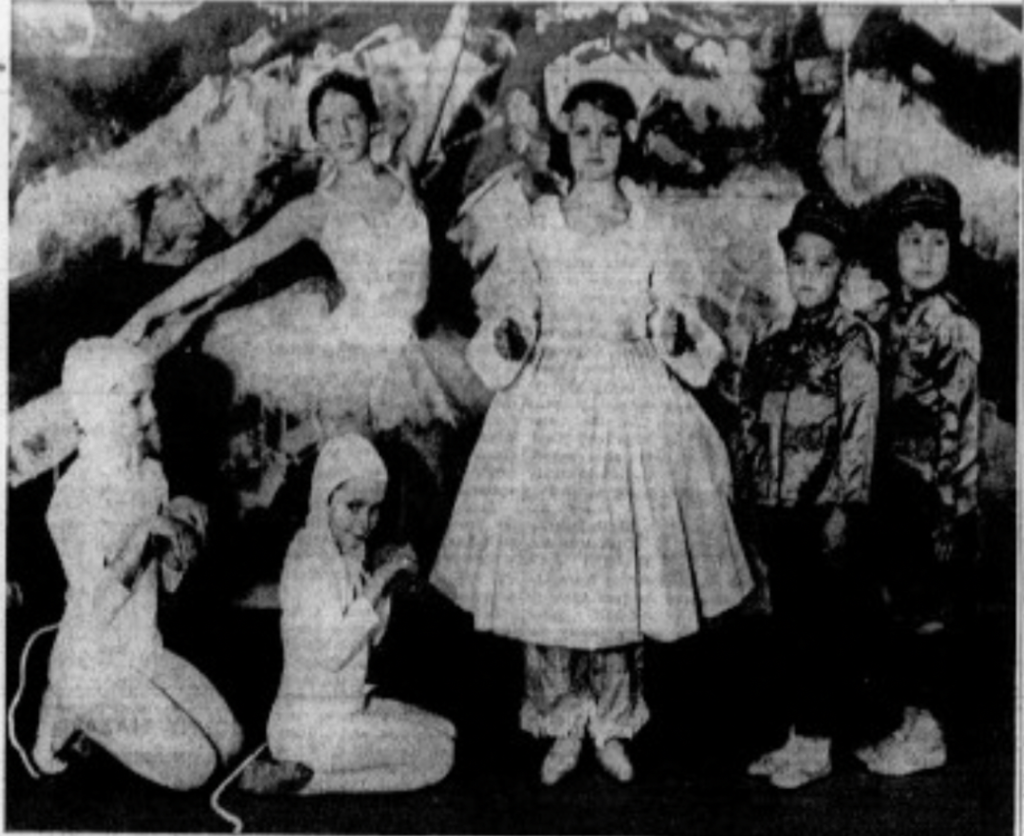
This photo of Virginia Ballet Company dancers accompanied a profile of the company’s production that ran in The Northern Virginia Sun on Dec. 15, 1966. That year, VBC performed Nutcracker on Dec. 29 and 30 at Woodson High School in Fairfax, Va.
A History of Nutcracker: Rousseau’s Legacy
A few years before Balanchine’s staging, another renowned professional dancer of Russian training was planting the seeds of what would become Virginia Ballet Company’s Nutcracker. Romanian-born Tatiana Rousseau was a child of war-torn Europe who was trained in the rich Russian ballet tradition in Paris. She was a prima ballerina with multiple companies in Europe before immigrating to the United States sometime before 1950.
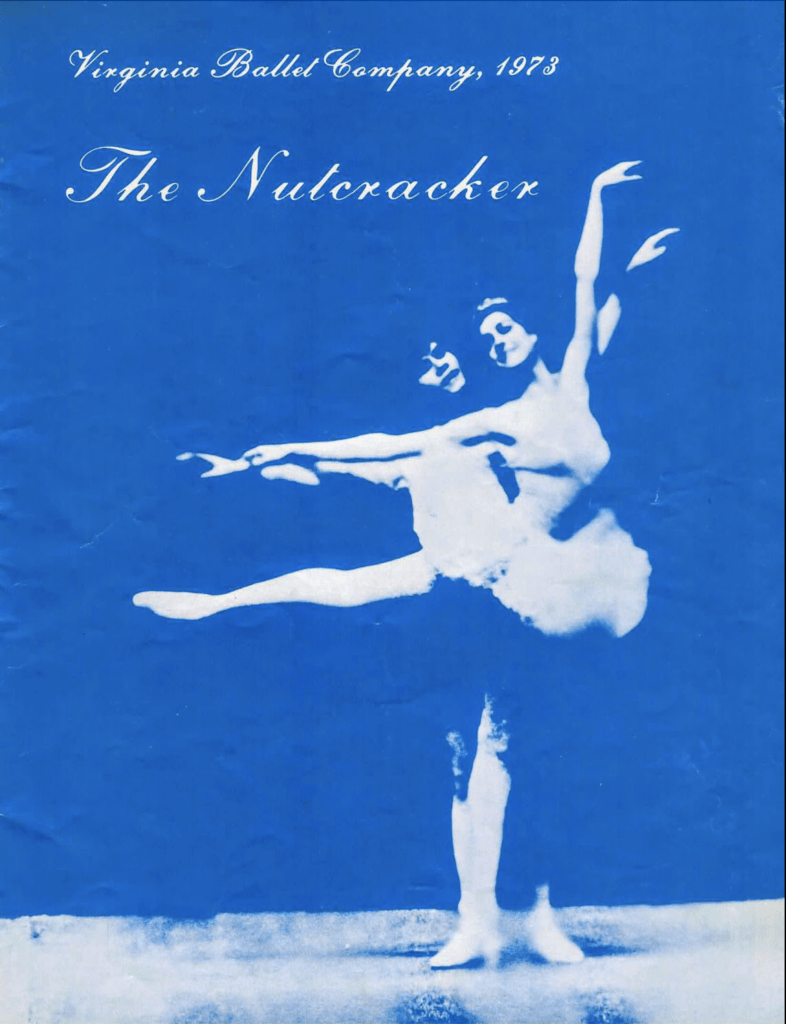
A program from VBC’s 1973 production of Nutcracker.
In 1950, Rousseau, then known as Tatiana Rousseau Jedenoff, presented a group of dancers performing the Waltz of the Flowers from Nutcracker at an event held at the Paradise Point Officer’s Club at Camp LeJeune, N.C.[1] Shortly thereafter, she began teaching ballet in the Vaganova style all over northern Virginia. Rousseau had a passion for spreading the art and culture of classical ballet. By 1958, she was driving more than 2,500 miles a month to teach more than 2,000 students, six days a week.[2]
VBC’s First-Known Nutcracker Performances
VBC’s first-known performance of “The Nutcracker Suite” was advertised in local newspapers in 1961.[3] Certainly by 1965, but perhaps earlier, the production evolved to become the full-length staging now known simply as Nutcracker. That was the same year that VBC acquired non-profit status. By then, Oleg Tupine had joined the school as a co-director with Rousseau, who would later become his wife.
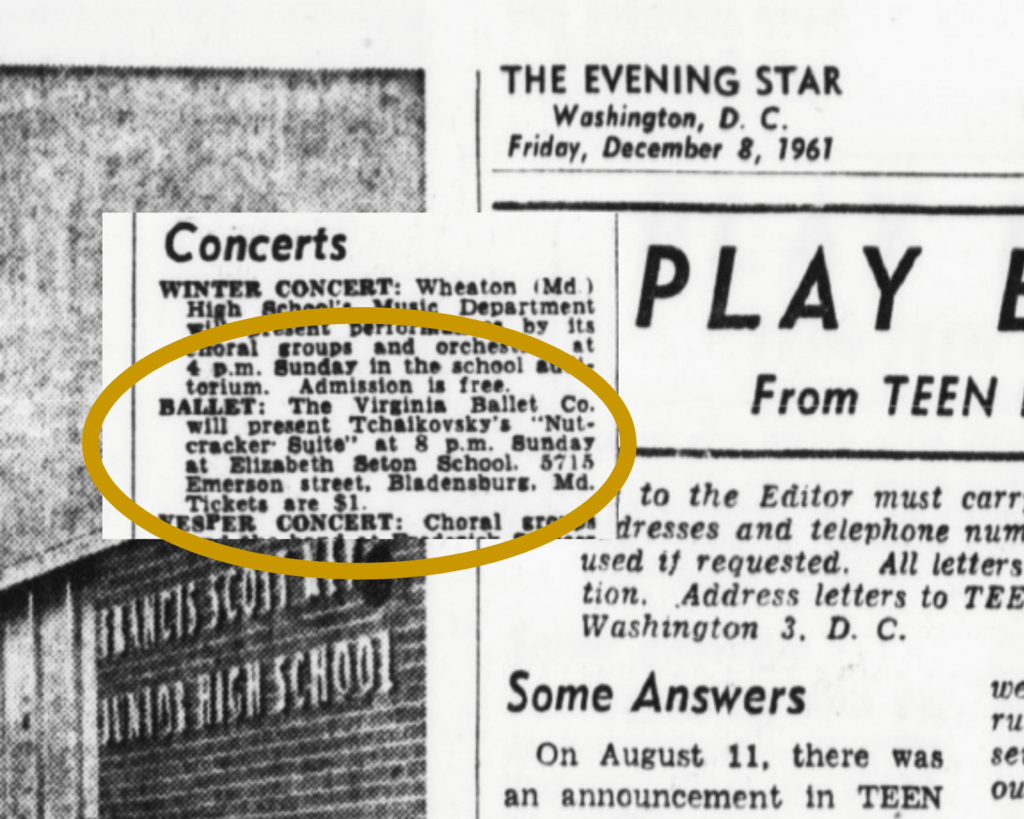
The first-known advertisement for Virginia Ballet Company’s Nutcracker ran in The Evening Star on Dec. 8, 1961.
Nearly 60 years later, VBC still performs the full Nutcracker with much of Rousseau and Tupine’s original staging intact. The performance includes characters such as the Fairy Queen and Sugar Rose, which are original to the production and provide more opportunities for students to dance solo roles. VBC also has a proud tradition of performing the Waltz of the Flowers—which retains elements from Rousseau’s 1950 performance—at U.S. Air Force Band and U.S. Army Band holiday concerts at DAR Constitution Hall in Washington, D.C.
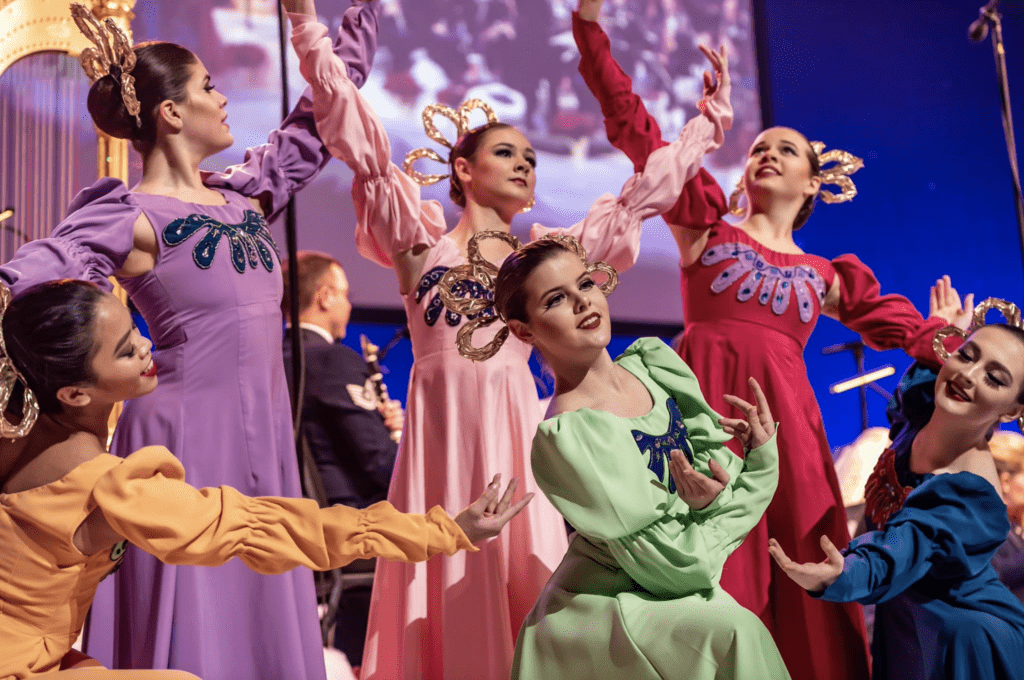
VBC dancers perform Waltz of the Flowers with the U.S. Air Force Band at DAR Constitution Hall in Washington, D.C., in 2018. Photo by MSgt Brendan Chaney, courtesy of the U.S. Air Force Band.
In addition to original roles and choreography, one of the highlights of VBC’s Nutcracker is its lush costuming. The bulk of the costumes were handmade especially for the production, with many dating back to the very beginning of VBC’s Nutcracker tradition. This means our dancers are wearing costumes that are more than half a century old—and in the case of children of alumni, wearing the same costumes that their parents wore decades earlier. Many of the costumes in the VBC inventory were made using fabric and trims that Rousseau brought with her from Europe.
Synopsis and Student Roles in VBC’s Nutcracker
VBC’s Nutcracker is one of the oldest continuously performed full-length Nutcrackers in the country. The first act opens on the Christmas party at the Silberhaus home, where Clara receives a nutcracker doll from her godfather, Herr Drosselmeyer. Drosselmeyer also brings a number of full-sized, magical dancing dolls to the party. In VBC’s production, these include a regiment of Toy Soldiers, whimsical Kissy Doll, mysterious Harlequin and adorable twin Mechanical Dolls.
After the party, Clara falls asleep and dreams of a battle between the toy soldiers led by her own Nutcracker, now full sized, and the Mouse King and his battalion of rodents. After the Mouse King’s defeat, there is a brief intermission before the breathtaking snow scene, in which the Snow Queen and her Prince dance with the Snow Flakes and Flurries amid an actual snowfall on stage. The second act finds Clara in the Land of Sweets being entertained by all the traditional divertissements associated with the Nutcracker, as well as a few extras you will only see in the VBC production.
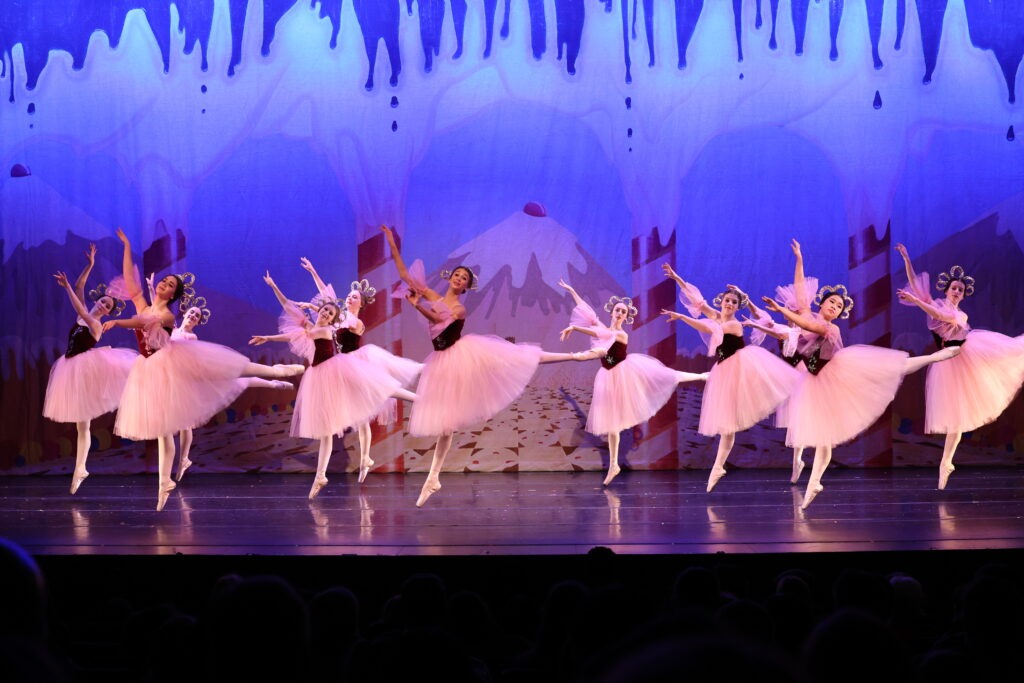
Continuing the history of the Nutcracker ballet, VBC dancers perform Waltz of the Flowers in 2023’s Nutcracker. Photo by Ruth Judson.
The school stages four to six shows in late December after Christmas. VBC’s Nutcracker is unique in that students perform all of the roles except male pas roles that are filled by professional dancers when necessary. The vast majority of students are eligible to perform in Nutcracker, from five years old up through our seniors in high school, with most holding multiple roles.
More Than Just a Ballet: A Historical Holiday Tradition
VBC is proud to play its own part in the history of the Nutcracker ballet. Our production is just one way we fulfill our mission of bringing art and culture to the community and inspiring audiences and new dancers to love classical ballet as much as we do. Tickets go on sale in November at vaballet.org.
Citations
- Munson, Edy. “Paradise Point: Plantation Party Hugh [sic] Success At Officer’s Club.” The News and Views [Jacksonville], 12 May 1950, p. 2, virginiachronicle.com. Accessed 21 September 2024.
- Hornig, Roberta. “Once a Prima Ballerina: Tatiana Jedenoff Teaches Ballet.” The Sunday Star [Washington, D.C.], 12 October 1958, p D-23, loc.gov. Accessed 20 September 2024.
- “Concerts.” The Evening Star [Washington, D.C.], 8 December 1961, pp. B-7, loc.gov. Accessed 20 September 2024.

